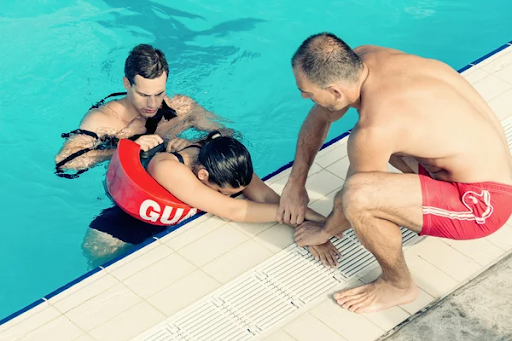When it comes to ensuring safety at swimming pools, beaches, and water parks, lifeguards play a crucial role. But behind their watchful eyes and swift actions lies extensive training that equips them to handle emergencies effectively. In this guide, we’ll delve into the essential features of lifeguard training, highlighting what aspiring lifeguards can expect from programs provided by the American Lifeguard Association (ALA).
1. Comprehensive CPR and First Aid Training
One of the primary responsibilities of a lifeguard is to respond to medical emergencies swiftly. Lifeguard training programs typically include comprehensive CPR (Cardiopulmonary Resuscitation) and first aid training. This training covers a range of skills, including assessing an emergency situation, performing CPR on adults, children, and infants, as well as administering first aid for various injuries and medical conditions.
ALA-certified lifeguard training goes beyond basic first aid, ensuring lifeguards are prepared to handle diverse emergency scenarios effectively. From treating minor cuts and bruises to managing spinal injuries and performing rescue breathing, lifeguards undergo rigorous training to provide immediate assistance when needed.
2. Water Rescue Techniques
Effective water rescue techniques are the cornerstone of lifeguard training. Lifeguards must be proficient swimmers capable of rescuing individuals of all ages and sizes in various water conditions. ALA training programs focus on teaching lifeguards different rescue techniques, including passive and active drowning victim recognition, proper use of rescue equipment such as buoys and tubes, and strategies for safely removing victims from the water.
Additionally, lifeguards learn how to perform swift and efficient water-based rescues while minimizing the risk to themselves and the victim. This includes techniques such as reaching assists, throwing assists, and swimming rescues, all of which are essential for quickly and safely bringing individuals to safety.
3. Vigilance and Preventive Measures
Prevention is key in lifeguarding. Alongside rescue skills, lifeguard training emphasizes the importance of vigilance and proactive measures to prevent emergencies from occurring in the first place. ALA-certified programs teach lifeguards how to recognize and anticipate potential hazards, enforce safety rules, and effectively communicate with patrons to promote a safe aquatic environment.
From maintaining constant surveillance of the water to conducting regular facility inspections, lifeguards are trained to identify and address potential risks promptly. They also learn how to educate swimmers about water safety practices and provide assistance and guidance when needed to prevent accidents and injuries.
4. Emergency Action Plans and Communication
In the event of an emergency, clear communication and swift action can make all the difference. Lifeguard training includes instruction on developing and implementing emergency action plans tailored to specific aquatic facilities. This involves establishing protocols for alerting other staff members, contacting emergency services, and coordinating rescue efforts.
Effective communication skills are also emphasized, ensuring lifeguards can convey information clearly and calmly to patrons, colleagues, and emergency responders during high-stress situations. Whether it’s directing bystanders to call for help or providing updates on the status of a rescue operation, lifeguards are trained to communicate effectively to ensure a coordinated response.
5. Ongoing Skills Maintenance and Professional Development
Lifeguard training doesn’t end once certification is obtained. Lifeguards must continuously maintain and improve their skills to stay prepared for emergencies. ALA provides opportunities for ongoing skills maintenance and professional development through refresher courses, workshops, and access to updated training materials.
Furthermore, lifeguards are encouraged to stay informed about the latest safety guidelines, techniques, and advancements in aquatic rescue technology. This commitment to ongoing learning ensures that lifeguards remain competent and confident in their abilities to safeguard the lives of those enjoying aquatic activities.
Conclusion
In conclusion, lifeguard training offered by the American Lifeguard Association encompasses a comprehensive range of skills and knowledge essential for ensuring the safety of swimmers and patrons in aquatic environments. From CPR and first aid to water rescue techniques and preventive measures, ALA-certified lifeguard training prepares individuals to respond effectively to emergencies and maintain a secure aquatic facility.

